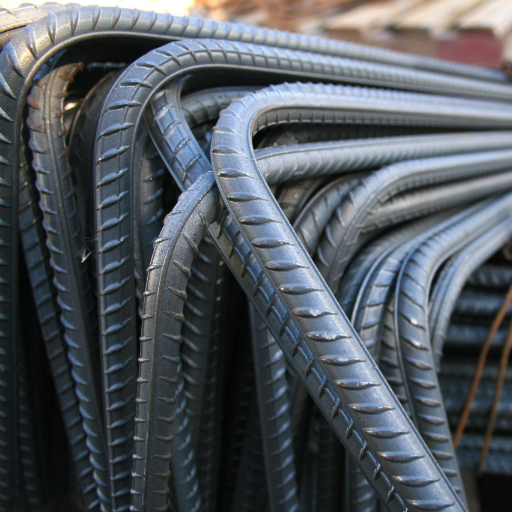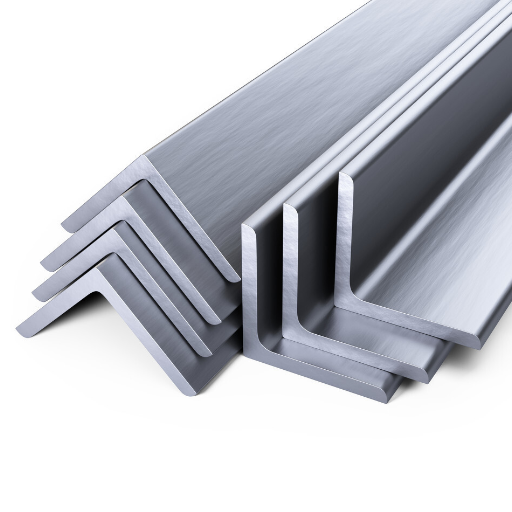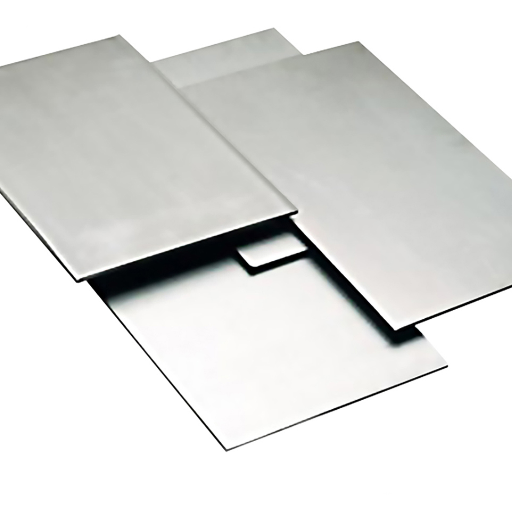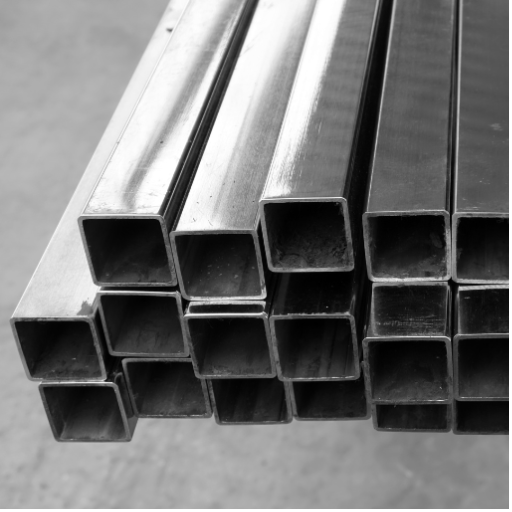Knowledge about steel gauge thickness is pivotal when weighing the options for selecting the proper steel for a project. Considering this, one would think this simple measurement inherently stands for thickness, along with strength and general applicability across various industries, from construction to automotive manufacturing. Yet, steel gauge is often tangled with varying standards, industry-specific demands, and intricate chart forms. This guide attempts to simplify the world of steel gauge thickness, giving a clear and authoritative explanation on what gauge numbers stand for, how to look at gauge charts, and how thickness affects properties and performance. From professional engineers to independent contractors to enthusiastic DIY sorts, the resource offers the knowledge needed to make the correct decisions when it comes to steel gauge measurements for the upcoming project.
What is Steel Gauge Thickness?
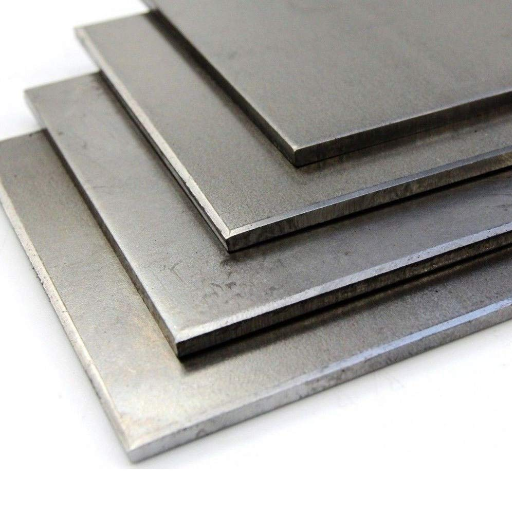
Steel gauge thickness is the term in use for designating the measure of thickness of a sheet, plate, or strip of steel. A standardized gauge number is given to a particular metal, where low numbers equate to thicker and higher numbers to thinner steel. For instance, steel of a thicker 10 gauge contrasts with 20-gauge lighter steel. The system in place offers a quick way to refer to and compare values, although there may be slight differences between certain materials, say stainless steel and galvanized steel, for instance. One can never underestimate the accuracy with which one truly knows steel gauge thickness to select the right material for the strength, durability, and performance requirements.
Definition of Steel Gauge
Steel gauge means the measure of steel thickness in the sheet domain. Starting back through the 19th century, the gauge system establishes an inverse-scale rating-to-thickness procedure, wherein a greater gauge number denotes a thinner steel sheet. Having said so, the practicality of this method makes it highly preferred in the specification of material size in diverse industries such as construction, manufacturing, and automotive areas. For example, some common usages are 16-gauge steel, which measures about 0.0598 inches (1.519 mm), and 20-gauge steel, which measures about 0.0359 inches (0.911 mm). It is very important to note that standards of steel gauge can change, depending upon the nature of the material, such as stainless steel, as opposed to galvanized steel, drawing one’s attention to gauge charts specifying each one. This exacting way of classification thus tremendously lends itself to ensuring the structural reliability, economical advantages, and longevity of a material.
Importance of Gauge Thickness in Metalworking
Accurate determination of gauge thickness constitutes one of the main factors in metalworking, bearing on quality performance, efficiency of fabrication, and endurance of the finished products. In the areas requiring lightweights, like automotive panels or roofing sheets, thin gauges such as 24-gauge steel come in. Here, manipulation and lighter weight are more important. In those where thick gauges are demanded, such as 10-gauge steel applications, superior load-bearing capability and greater resistance to deformation have to be ensured, as in industrial machinery or construction beams.
Further improvements in the industry stipulate that consistent gauge measurement should eliminate those processes that will waste material and only aim to conserve resources in a highly automated production process, where every small variation in dimensions can jeopardize product integrity. However, it has been proven in studies that variations in gauge thickness of as little as 0.005 inch in the production line reduce the structural performance in measurable ways and actively contribute to waste of materials, thereby emphasizing the urgency of strict quality control standards. Upholding accuracy in gauge dimensions will guarantee that the projects are economically feasible, socially conscious, and structurally sound-aligned to current sustainability concerns and engineering criteria.
Types of Steel Used in Gauge Measurements
In steel, gauge thickness systems are used mostly for carbon steel, stainless steel, and galvanized steel. These steel types have configuration-dependent utility. Carbon steel is considered strong and treatable for a range of structural applications and industrial manufacturing, as it can be readily produced into a variety of thicknesses considered relevant to meet specific ends. Stainless steel, appreciated on account of its corrosion resistance and durability, finds application in areas subject to moisture and chemicals; marine and food processing being two such examples. Galvanized steel consists of a zinc coating, giving an additional protection against rusting and oxidation; it is mostly chosen for external structures or parts in a humid atmosphere.
Since the introduction of metallurgical engineering, the production of high-strength low-alloy steels has been facilitative to the optimization of performance while minimizing weight, a consideration in the automotive industry. Accurate gauge measures are essential for all of these, as small variations alter load-bearing capacity, wear resistance, and the overall long-term utilization of the material in its primary function. This, therefore, necessitates the working of a varied steel type in a gauge-related arena using high-precision equipment and conformity to standards.
Choosing the Right Steel Gauge Thickness
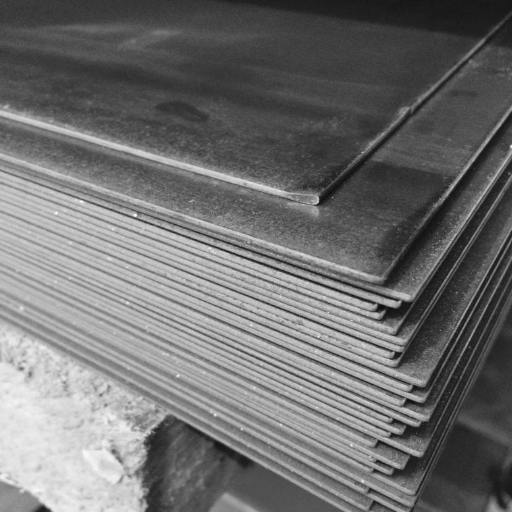
Based on the specifications of the application in question, the choice of steel gauge thickness should follow. The pertinent considerations are:
- Structural Requirements: Heavier gauges or lower gauge numbers are applied in cases where high strength and durability are necessary, such as frameworks for buildings or components within vehicles.
- Lighter gauges or higher numbers, on the other hand, are for uses such as duct work or decor where flexibility and weight reduction are desirable.
- Corrosion Resistance: Thicker gauges will potentially best withstand environmental wear; however, one must also assess the conductive coatings or the alloy composition to ensure that they will sustain this in the long term.
- Load-Bearing: In the event that the material will be carrying a lot of weight and constant stress, thicker sheets will be needed to prevent deformation or failure thereof.
Understanding and balancing these factors will help you decide what will give optimum performance for cost in favor of your operation.
How Gauge Thickness Affects Material Strength
The materials’ thickness, or gauge, is an extremely critical factor when it comes to the structural integrity of the material and the strength of the material in various situations. Thicker gauges generally bend less under an applied force as the bending stress depends on the cross-sectional area of the material, which in this scenario is bigger in thicker materials and distributes the force evenly. For example, in steel, a low gauge would generally mean high tensile strength and load-bearing abilities, and is used for applications in construction beams and heavy-duty machinery components.
However, material composition and treatment can alter the strength characteristics of gauge. An advanced alloy or one that has been cold-worked might have greater density and finer grain structure, thus offering higher strength than a thicker counterpart of a cheaper, untreated grade. Apart from these, practical considerations show that, while thicker gauges ensure longer durability, they also weigh heavier and incur higher material costs. These elements, therefore, must be taken into consideration as well, alongside operational requirements.
Hence, knowing the interrelation among these parameters is vital for selecting the right material in engineering and manufacturing. This optimal gauge decision is made by using standard data from tests and predictive models that match the selected gauge along with performance requirements. Success and efficiency are the primary concerns of choosing the right gauge across many industries.
Practical Tips for Selecting Sheet Metal Gauge
- Understand the Material Properties
Prior to determining the gauge, note the kind of material and its properties. They differ as far as thickness-to-strength ratios go, from materials such as steel, aluminum, to brass. For instance; 16-gauge steel sheet has a nominal thickness of 0.0598 inch (1.52 mm) and 16-gauge aluminum is thinner at 0.0508 inch (1.29 mm). With such disparity, one must consult the gauge charts that pertain to each material.
- Consider Structural Requirements
Gauge thickness evaluation of the strength and stiffness requirements of the application is rated. Optimal for high load and high-impact conditions are thicker gauges. Thin-gauge automotive structural members generally range from 18 to 22, with respect to the weight to ensure integrity.
- Account for Manufacturing Limitations
Methods employed during manufacturing processes must suit your gauge of choice. Thin sheets (say, 24- to 30-gauge) are indeed a bit flexible but are very disturbing when time comes to weld, and even cut neatly. One will want to optimize for bending, stamping, or laser cutting, so ensure your gauge fits within those ranks.
- Factor in Corrosion Resistance
In case the sheet metal will be exposed to corrosive environments, a material and gauge should always be selected that provide good corrosion resistance, such as galvanized steel sheet in the 20-gauge to 24-gauge range for outdoor applications.
- Evaluate Cost Implications
Industry Standards for Steel Gauge Measurements

Steel gauge dimensions are standardized to ensure consistency and reliability for various applications. For instance, the most commonly referenced standard in the United States is the American Wire Gauge (AWG) for nonferrous metals, while for steel itself is measured with the Manufacturers’ Standard Gauge (MSG). MSG measures the thickness of steel by fractions of an inch, with the lowest number correlated to the thickest material. On the international arena, the International Standard Organization (ISO) serves as a regulating body for steel thickness under the guise of ISO 9001 certifications that ensure proper recognition towards quality management systems of operations. It is highly recommended that when determining the gauge of measurements for an object, one should be sure to obtain all relevant industry specifications that are related to the object itself. For example, ASTM (American Society for Testing and Materials) specifications that assist in meeting the structural requirements and safety regulations should be diligently studied.
Overview of Industry Standards
Standards in an industry are an important bed for uniformity and ensuring quality of product at every stage of an industrial process. These standards, be they for steel or aluminum, set forth by ASTM International or the ISO, are very critical to defining consistent specifications with regard to dimensions, performance, and safety. They are continuously being modified in accordance with technological developments and newer practices of the industry. Also, the American National Standards Institute (ANSI) promulgates standards recognizing national frameworks so that their compatibility and interoperability may be ensured. Among newer standards are those focused on green sustainability: LEED (Leadership in Energy and Environmental Design) certifications have gained currency, promoting energy-conscious and green building paradigms. The compliant and strict enforcement of these standards enables very useful performance and reliability to ensue in all walks-from construction to manufacturing.
Comparison of American and Metric Gauge Systems
|
Key Point |
American Gauge System |
Metric Gauge System |
|---|---|---|
|
Measurement Basis |
Based on fractional inches |
Based on millimeters |
|
Unit Size Order |
Numbers decrease as size increases |
Numbers increase with size |
|
Common Usage |
Predominantly in the United States |
Used worldwide |
|
Precision |
Higher variation in smaller gauges |
More consistent sizing |
|
Material Compatibility |
Focused on imperial materials |
Matches metric standards |
|
Conversion Complexity |
Requires fractional to metric conversion |
Direct scaling with decimals |
|
Notation |
Uses gauge numbers (e.g., 18 gauge) |
Lists dimensions in millimeters |
|
System Origin |
Developed from wire drawing techniques |
Standardized internationally |
|
Applicability |
Primarily for steel and wires |
Used broadly across industries |
|
Common Industries |
Manufacturing, construction |
Global design, engineering |
Compliance and Quality Control in Steel Manufacturing
In the manufacture of steel, stringent compliance standards and quality control checks must be applied to ensure that safety, performance, and sustainability standards are met. International standards such as ISO 9001 and ASTM might set forth the technical aspects related to the consistency in manufacturing and properties of the materials. These parameters are chosen based on tensile strength, ductility, and corrosion resistance required for a particular application-specific performance so that the steel fulfills very exact application requirements. Common NDT inspections include ultrasonic testing and radiographic inspection to find internal defects and magnetic particle testing to find surface defects, all without damaging the steel being tested.
Environmental considerations became a real issue, with compliance seeing its boundaries now extended toward restrictions under the REACH directive and the Clean Air Act to reduce emission and hazardous substances from production activity. With an advanced QMS integrated with automation and real-time-monitoring data, the precision of resolving issues promptly has been unprecedented. In line with a global awareness of sustainable materials, more steel producers are nowadays being pushed to enhance their recyclability and employ technologies that facilitate energy-efficient production, combining compliance with modern green efforts.
Real-World Applications of Steel Gauge Thickness
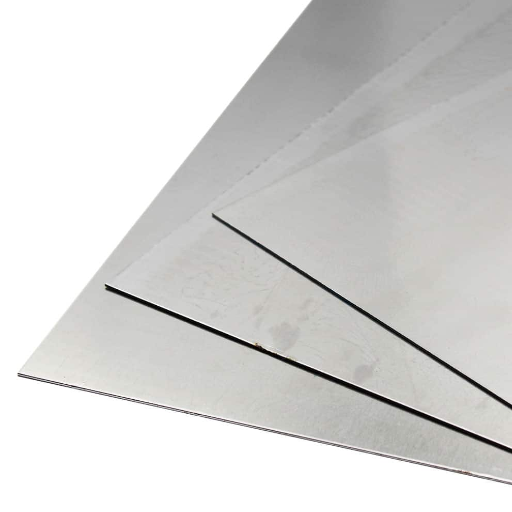
- Construction Industry
Steel gauge thickness is widely applied across construction for structural frameworks, roofing, and cladding. Having a thicker gauge (e.g., 10-gauge steel at about 0.1345 in.) in load-bearing structures is preferred because of greater strength, and a thinner gauge (e.g., 22-gauge steel at some 0.0299 inches.) in light roofing and siding applications, where flexibility and cost are the priority.
- Automotive Manufacturing
The automotive industry uses various thickness gauges of steel pandering to performance, safety, and fuel efficiency needs. Thin steel such as that of 20-gauge (about 0.0359 inches) is used for light designs for exterior body panels. On the other hand, steel of 16-gauge (around 0.0598 inches) thickness goes into structural work such as chassis and reinforcements, requiring safety and durability assurance.
- HVAC (Heating, Ventilation, and Air Conditioning) Systems
HVAC sheet metal ducting gauges are mainly from 24-gauge (about 0.0239 inches) to 30-gauge (around 0.0157 inches). The chosen gauge is reckoned as a slight bit flexible and thus sturdy enough to withstand minor air pressure and hits from outside, created for good air distribution.
- Appliance Manufacturing
Appliances such as dryers require steel of certain gauge thickness to combine aesthetics and function. Thin gauges, such as 26-gauge (0.0179 inch), are used for outer panels due to its sleek appearance and lightweight while heavier gauge is used for structural or internal components.
- Shipping and Storage Containers
- Metal Fabrication and Art
Role in Manufacturing and Fabrication
The system of steel gauges is essential to manufacturing and fabrication processes in various industries. Thickness also influences performance, which is essentially tensile strength, flexibility, and durability, engineering the components to precision. Thin gauges such as 18-gauge steel (about 0.0478 inches) are typically utilized in the auto industry to manufacture body panels that cut vehicle weight while retaining structural integrity. Heavier gauges of approximately 10-gauge (0.1345 inches) are used for increased chassis construction strength to deal with stress and load.
These fabrication technologies generate higher efficiency by enabling fabrication of steel gauges of various thicknesses with precision, particularly laser-cutting and CNC machining. Step-by-step, such actions and the need for meeting strict standards and regulatory directives lead to the selection of steel gauges with exact measurements, thus benefiting safety and performance on critical applications. Such considerations greatly accentuate the importance of gauge selection in the optimum utilization of materials toward quality manufacturing output.
Significance in the Automotive Industry
Tools for Measuring Steel Gauge Thickness

There are some specialized instruments to meticulously evaluate the thickness of steel gauge:
- Digital Calipers – They give precise and trustworthy thickness values for almost all steel gauge thicknesses.
- Micrometers – They are basically specialized for extraordinarily thin or small steel sheets with high accuracy.
- Ultrasonic Thickness Gauges – A nondestructive set of tools making measurements of thickness by transmitting ultrasonic waves through the material, especially if the coating or surface is otherwise inaccessible.
- Steel Gauge Measuring Tools – These are very simple and cheap tools specially made for quick gauge checks and often rely on engraved markings for reference.
Measurement Tools and Techniques
Measurement tools have greatly improved with technologies featuring intelligent characteristics that further ensure increased accuracy, efficacy, and ease of use. One of these advancements is integrating digital interfaces in conventional measurement instruments. Digital calipers nowadays grant highly accurate measurements that can be recorded in documentation or transferred to data analysis software for further usage, thus eliminating human errors. Laser measurement systems are one more remarkable innovation in this domain. The tools harness laser technology-based techniques to obtain very precise measurements of distance and dimensions, often with accuracies down to a millimeter, and are therefore vitally important in the construction, engineering, and manufacturing industries.
How to Use a Gauge Measurement Tool
Generally, performing gauge measurement involves a string of activities, each requiring strict adherence, lest errors creep into the data gathered. Begin with calibration of the instrument to the set gauge standard by referencing another certified calibration gauge, to eradicate the possibility of deviations in measurement readings. The next step is a proper setup that includes cleaning both the surfaces of the tool and that of the object to be measured to avoid contamination that might interfere with the reading. Align the gauge properly with the measurement point where the measurement takes place. Gently apply pressure, not force, as overload pressure could adversely distort correct readings, mostly on thin samples.
Reference Sources
-
Development of Chinese Light Steel Construction Residential Buildings: This study explores the use of light-gauge steel in residential construction, with steel thickness ranging from 0.6mm to 1.8mm. It emphasizes the relationship between gauge numbers and steel thickness, noting that higher gauge numbers correspond to thinner steel.Read more
-
Investigation of Epoxy Powder Coated Galvanized Steel Substrate Through Electrostatic Powder Coating System: The study focuses on achieving optimal coating thickness for galvanized steel using an electrostatic powder coating system. It evaluates coating quality through thickness measurements and other tests like Buchholz indentation.Read more
-
Flexural Behavior of Composite Slab: This paper examines the flexural behavior of composite slabs with steel deck thicknesses of 0.7mm. It highlights the impact of steel thickness on load-bearing capacity and deflection. The study uses linear strain gauges to measure strain on steel sheets and evaluates load and deflection under various conditions.Read more
Frequently Asked Questions (FAQs)
Q: Understanding Steel Gauge Thickness
A: Steel gauge thickness can often be confusing, especially when trying to determine the right metal for your project. The gauge size is a unit of measurement that indicates the thickness of the steel or metal sheet. Lower gauge numbers indicate thicker metal, while higher numbers represent thinner sheets. For example, a 14-gauge steel sheet has a different thickness than a 20-gauge sheet. Understanding the steel gauge thickness chart is essential for selecting the appropriate material for your needs, whether it’s for construction, manufacturing, or DIY projects.
Q: What is a Steel Gauge Chart?
A: A steel gauge chart is a helpful tool that displays the relationship between gauge size and thickness in inches or millimeters. This chart allows you to easily compare different steel gauge thicknesses and select the right material for your project. The thicknesses differ for each gauge, meaning that a 14-gauge steel sheet will have a specific thickness that can be compared to other gauge sizes. By using a gauge thickness chart, you can quickly understand the equivalent thicknesses of various metal materials, ensuring you choose the best option for your application.
Q: How to Read a Gauge Thickness Chart?
A: Reading a gauge thickness chart is straightforward once you understand the layout. The chart typically lists gauge sizes on one axis and their corresponding thicknesses in inches or millimeters on the other. When using a sheet metal gauge size chart, you can easily find the thickness of your chosen gauge. For instance, if you look up 14-gauge on the chart, you’ll see its equivalent thickness, which helps in determining the weight of the sheet. This understanding is crucial in the steel industry, as selecting the wrong gauge can affect the integrity and durability of your project.
Q: What is the Metal Gauge Thickness for Stainless Steel?
A: The metal gauge thickness for stainless steel can vary based on the specific application and requirements. Generally, stainless steel is available in various gauge sizes, similar to carbon steel. However, it’s essential to refer to the stainless steel gauge chart to find the exact thickness you need. For example, a 14-gauge stainless steel sheet may have a different weight compared to a carbon steel sheet of the same gauge. Understanding these differences ensures that you select the correct material for your project while considering factors such as corrosion resistance and durability.
Q: What is the Sheet Metal Thickness for Galvanized Steel?
A: Sheet metal thickness for galvanized steel is typically measured using the same gauge system as other types of steel. The galvanized coating adds an extra layer of protection against corrosion, making it ideal for outdoor applications. When you refer to the sheet metal gauge chart, you can see how the thickness of galvanized steel compares to other metals. For instance, a 14-gauge galvanized steel sheet will have a specific thickness that is crucial for understanding its structural capabilities. Always consider the coating and its impact on overall thickness when selecting your materials.
Q: How to Choose the Right Gauge Metal for Your Project?
A: Choosing the right gauge metal involves several considerations, including the intended use, weight requirements, and environmental conditions. Utilizing a sizing chart can help you determine the appropriate gauge for your project. For example, if you need a thicker metal for structural support, you might opt for a lower gauge number, such as 14-gauge. Additionally, understanding steel gauge thickness and its implications for material strength is vital. Always consider the factors of weight, corrosion resistance, and thickness in inches when making your selection.

